A farmhouse nursery blends rustic charm with cozy comfort, creating a serene and timeless space for your little one. This popular design style emphasizes natural materials, neutral color palettes, and handcrafted details to craft a warm and inviting atmosphere. By incorporating elements like weathered wood, soft textiles, and vintage-inspired accents, you can design a sanctuary that is both beautiful and functional. The key is to balance rustic simplicity with gentle touches, ensuring the room feels peaceful and nurturing. From statement furniture pieces to subtle decorative details, there are countless ways to bring this beloved aesthetic to life for your baby.
1. Farmhouse Nursery with a Shiplap Accent Wall
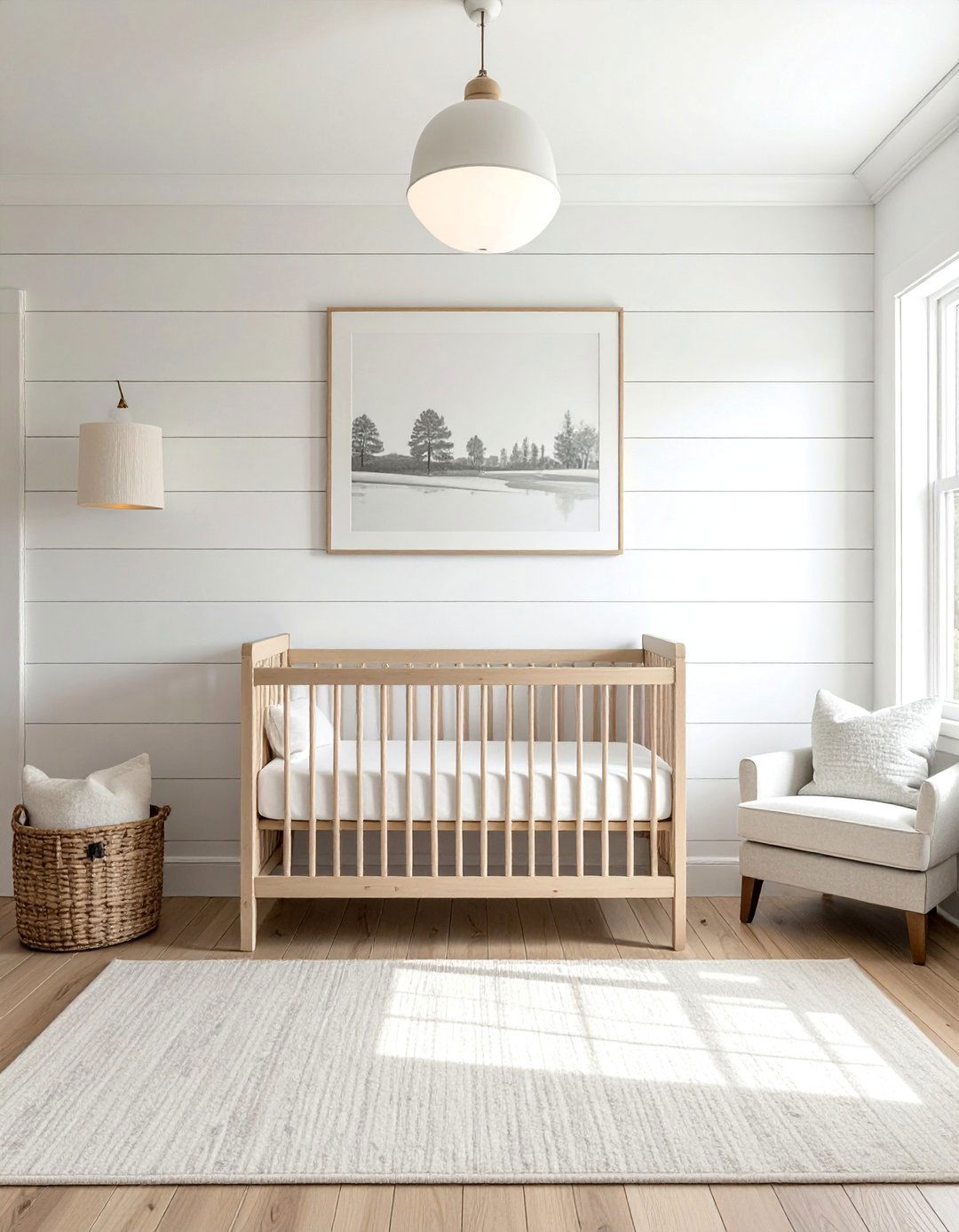
A shiplap accent wall is a hallmark of the farmhouse aesthetic, instantly adding texture and character to a nursery. Installing horizontal or vertical shiplap panels behind the crib creates a stunning focal point without overwhelming the space. Painted in a soft white, cream, or a muted neutral tone, it provides a clean, bright backdrop that enhances other rustic elements. This timeless feature pairs beautifully with wooden furniture and metal accents, establishing an authentic country-inspired feel. For a subtle twist, consider a light gray or sage green shiplap to introduce a hint of color while maintaining the room's serene and calming ambiance.
2. Incorporating a Rustic Wooden Crib
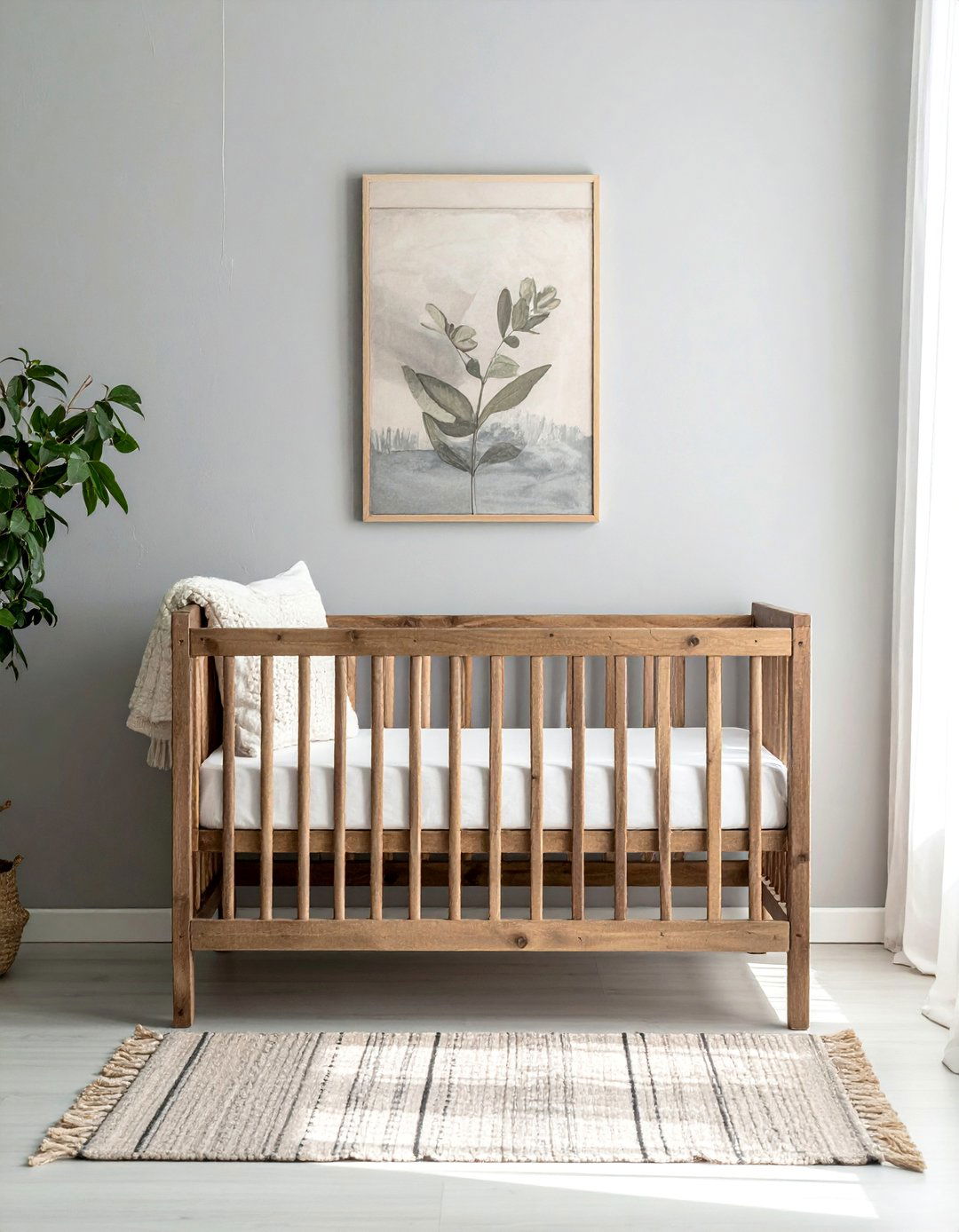
The centerpiece of any nursery is the crib, and a rustic wooden model is perfect for a farmhouse theme. Look for a crib made from reclaimed or distressed wood, showcasing natural grains, knots, and imperfections that add warmth and history to the room. Designs with simple, clean lines prevent the piece from feeling too heavy, while finishes ranging from light, natural pine to a deeper walnut can suit your specific color scheme. This sturdy, timeless piece of furniture not only provides a safe sleeping space but also acts as an anchor for the entire room's decor, embodying the simple, enduring spirit of farmhouse style.
3. Using a Neutral Farmhouse Nursery Color Palette
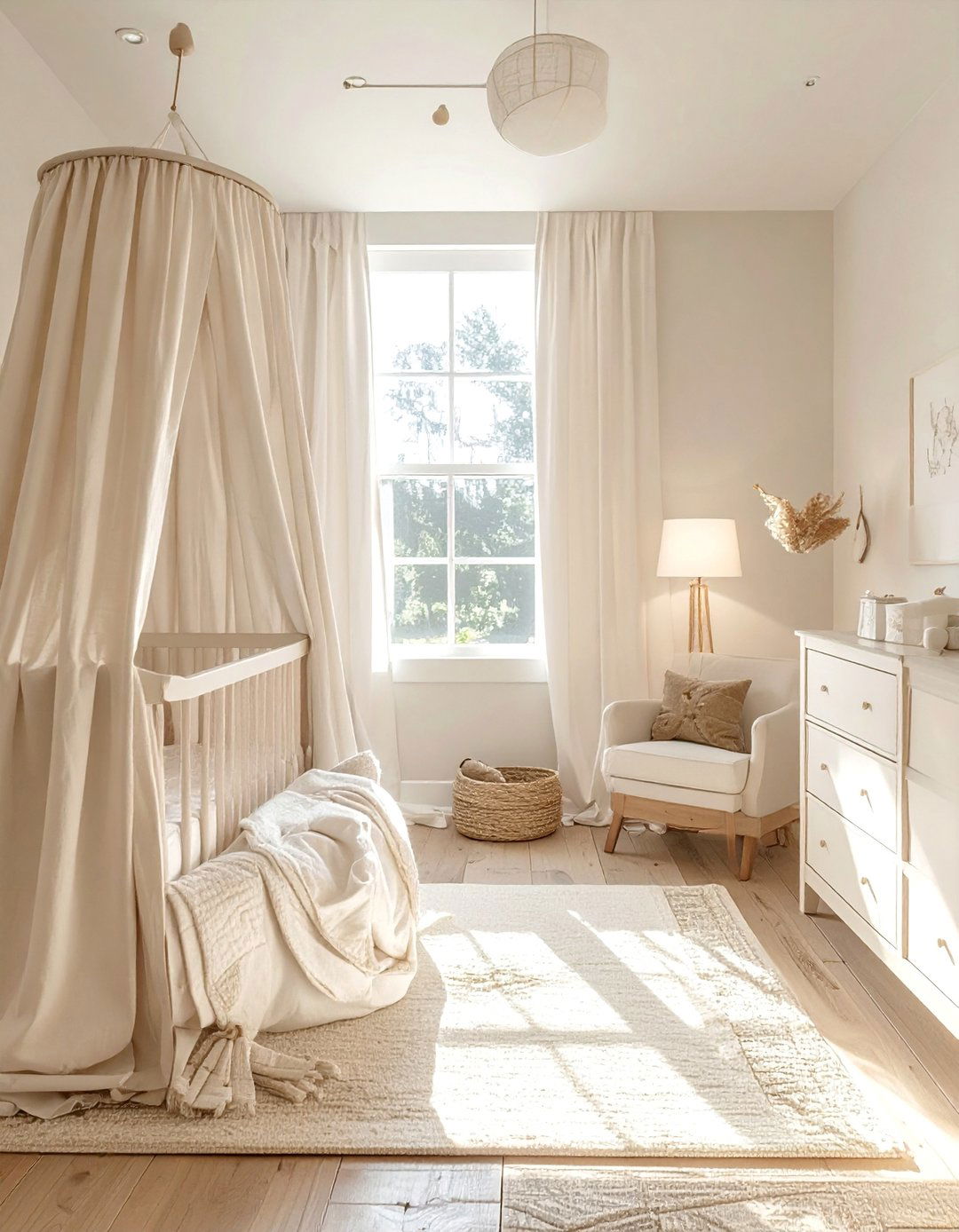
For an authentic farmhouse nursery, a neutral color palette is essential for creating a calm and soothing environment. Shades of white, cream, beige, and soft gray form a perfect foundation, making the space feel bright and airy. These gentle hues evoke a sense of simplicity and tranquility, ideal for a baby's room. To add depth and prevent the decor from feeling flat, layer different textures within this neutral scheme. Think chunky knit blankets, linen curtains, and woven jute rugs. A neutral background also allows other design elements, like a rustic wooden crib or vintage-inspired art, to stand out as focal points.
4. Installing a Barn Door for the Nursery Closet
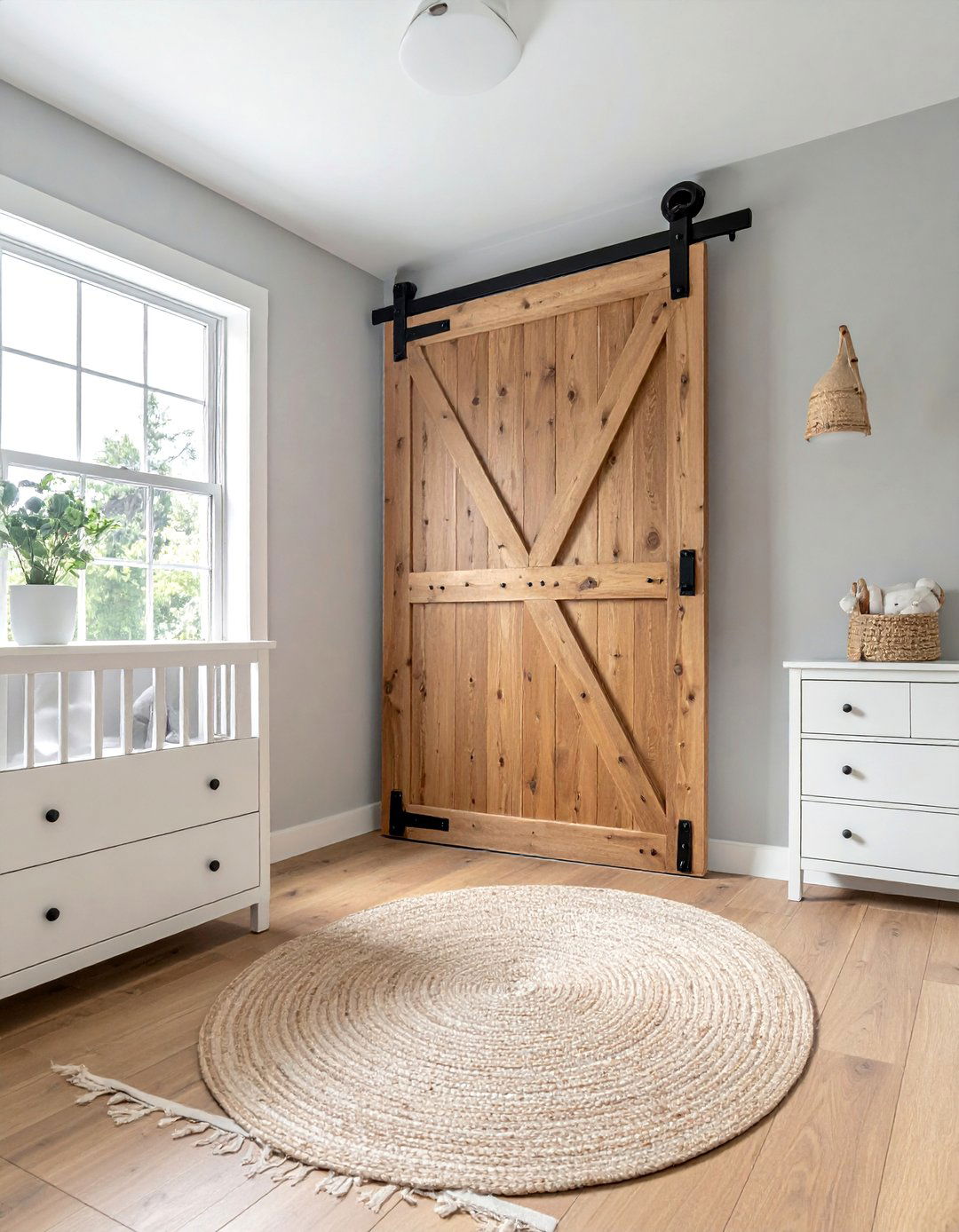
A sliding barn door is a fantastic way to introduce a bold farmhouse statement into your nursery. Replacing a standard closet door with a rustic barn door saves space and adds significant visual interest. Choose a door made from weathered or reclaimed wood to enhance the rustic charm, or opt for a painted version in a crisp white or soft gray to match the room's color scheme. The distinctive metal hardware, including the track and handle, further contributes to the industrial-meets-country aesthetic. This functional element is not just a door but a piece of decor that perfectly captures the practical and stylish nature of farmhouse design.
5. Farmhouse Nursery with Distressed Wood Furniture
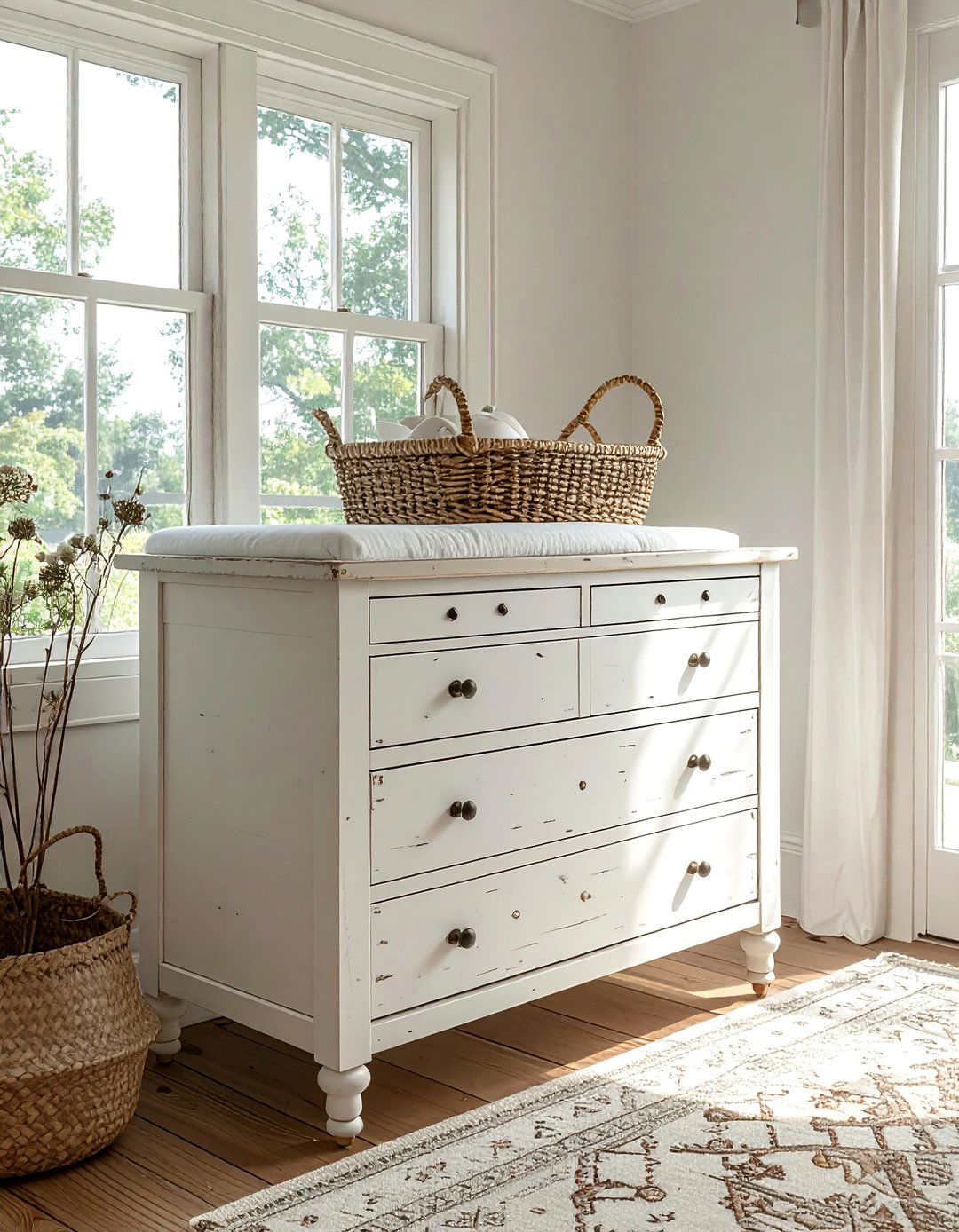
Distressed wood furniture is key to achieving an authentic, lived-in farmhouse nursery look. A dresser that doubles as a changing table, a bookshelf, or a small side table with a weathered finish brings a sense of history and charm. The beauty of distressed pieces lies in their imperfections—the gently worn edges, faded paint, and visible wood grain tell a story. You can find vintage items or create the look yourself with chalk paint and sandpaper. These pieces add texture and character, preventing the room from feeling too new or sterile, and they pair wonderfully with the soft, neutral tones typical of this style.
6. Hanging a Vintage-Inspired Nursery Mobile
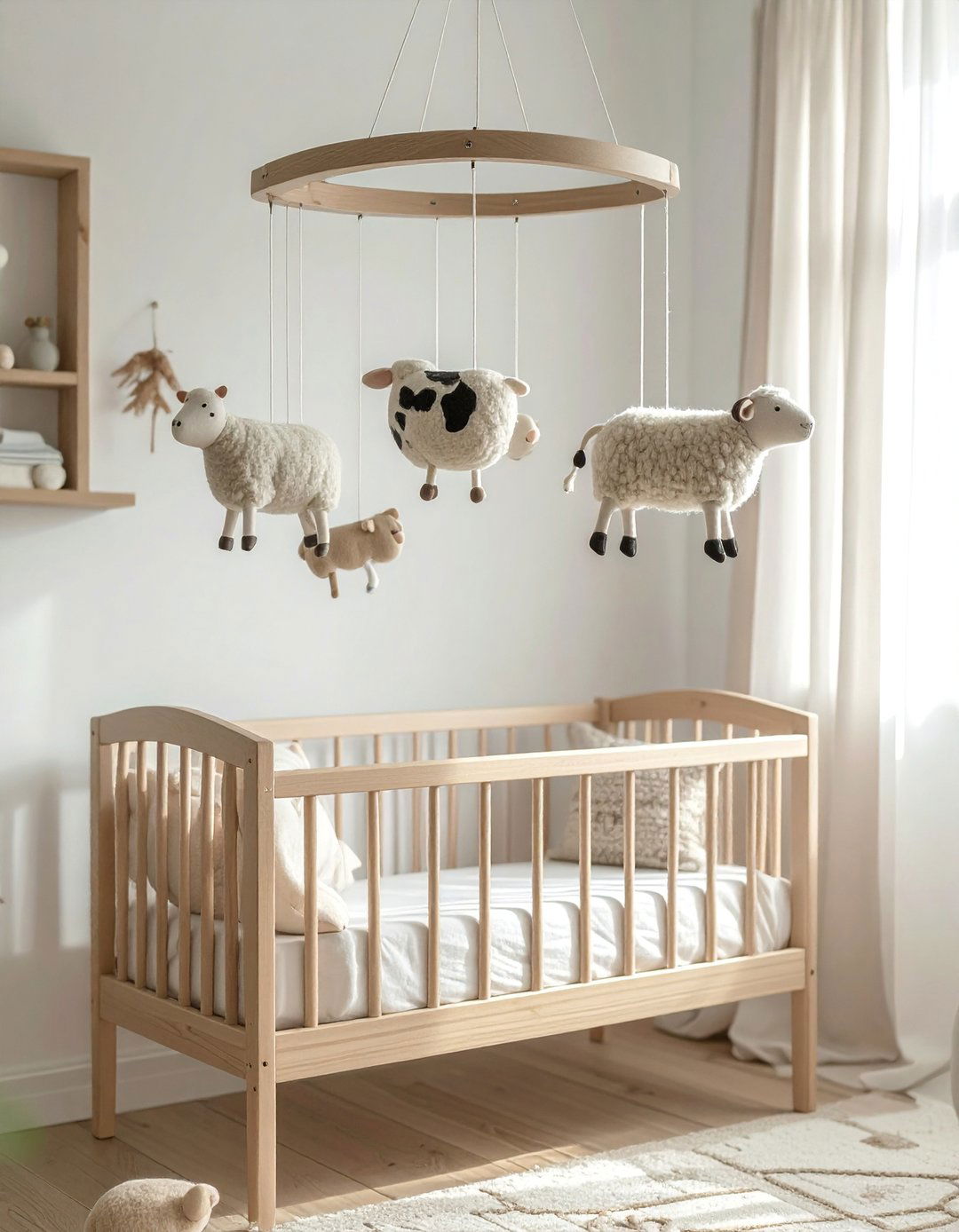
A vintage-inspired mobile adds a touch of whimsical charm above the crib in a farmhouse nursery. Instead of bright plastics, opt for mobiles crafted from natural materials like wood, felt, or macrame. Simple designs featuring hand-carved farm animals, felted clouds and stars, or delicate wooden beads align perfectly with the rustic aesthetic. These handcrafted pieces serve as gentle, engaging entertainment for your baby while also functioning as a beautiful decorative element. A mobile with a simple, rustic design complements the overall theme without creating unnecessary clutter, contributing to the room's peaceful and handcrafted feel.
7. Decorating with Farm Animal Accents
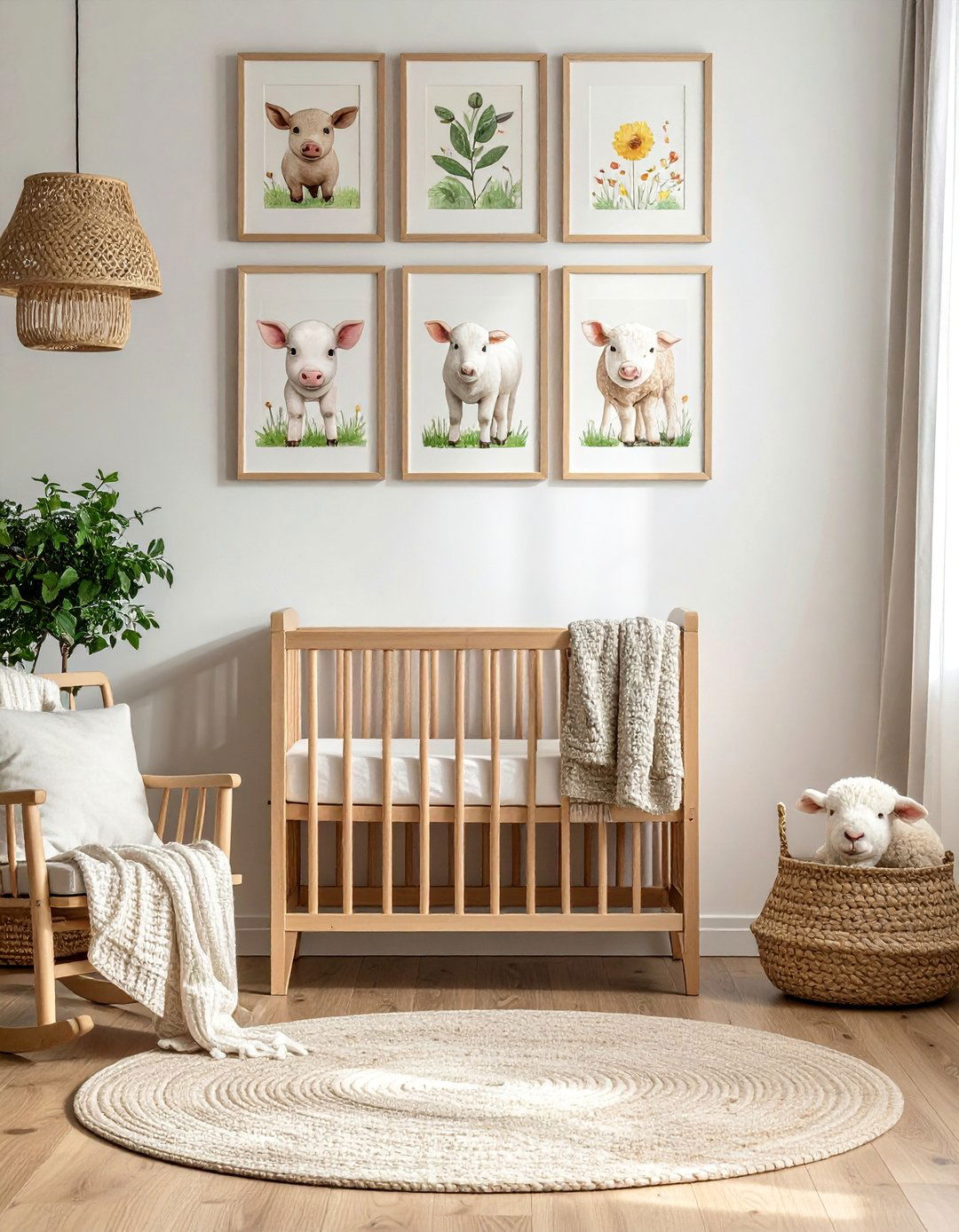
Subtle farm animal accents are a sweet and fitting addition to a farmhouse nursery. Instead of overly bright cartoons, choose more realistic or stylized illustrations. A gallery wall featuring gentle watercolor prints of lambs, cows, or chickens can create a charming focal point. You could also incorporate animal-themed decor through a patterned crib sheet, a plush rocking sheep, or wooden animal figurines on a shelf. These touches bring a playful yet sophisticated nod to country life, enriching the theme in a way that is both endearing and timeless. The key is to integrate them sparingly to maintain a clean, uncluttered aesthetic.
8. Adding Wainscoting for Farmhouse Nursery Detail
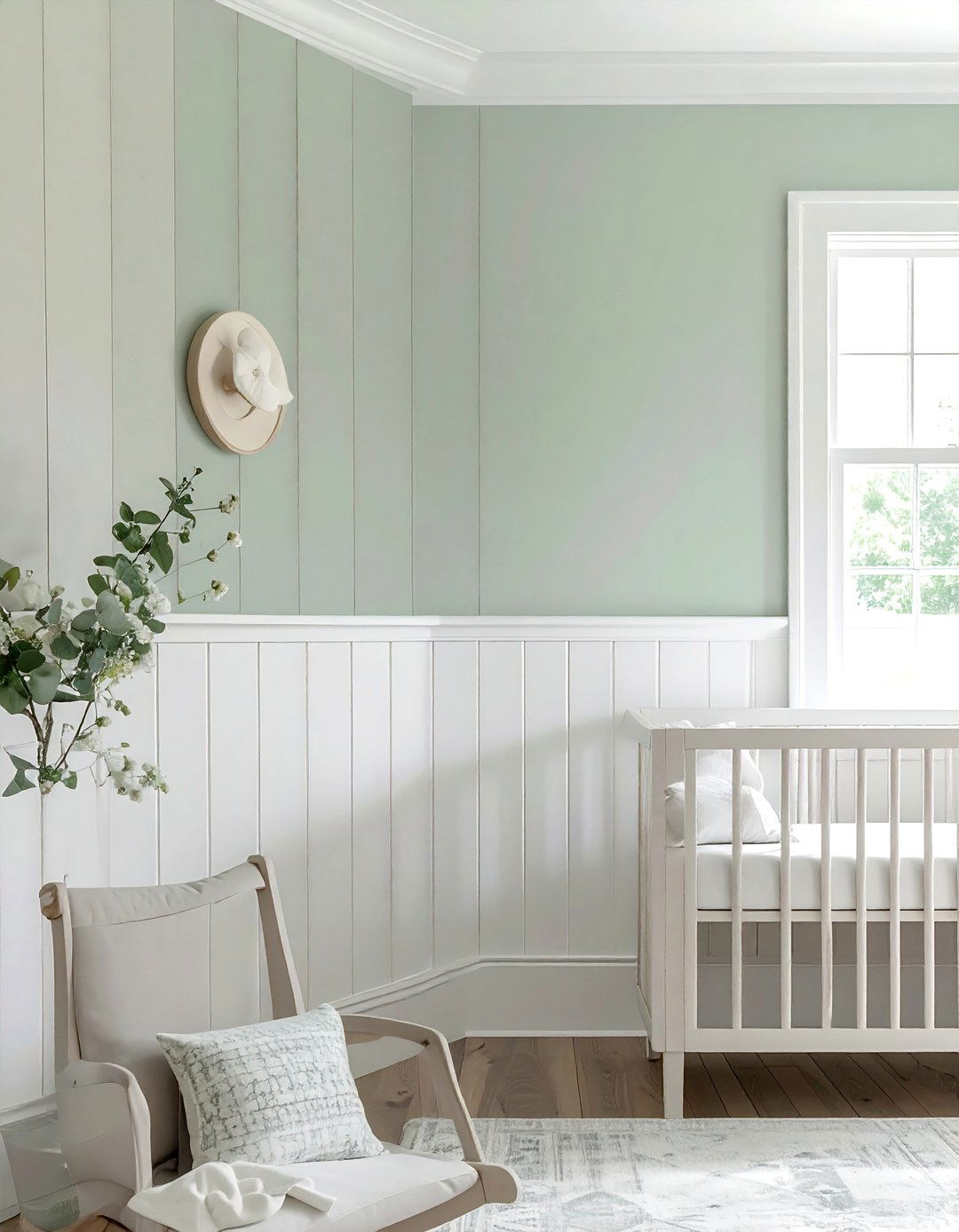
Wainscoting is a classic architectural detail that brings a touch of traditional elegance to a farmhouse nursery. Installing beadboard or panel wainscoting on the lower half of the walls adds texture and dimension, creating a refined yet rustic look. Typically painted in a crisp white or a soft, contrasting neutral, it provides a beautiful visual break and protects the walls from scuffs. This feature pairs exceptionally well with a darker wall color above it, such as a muted sage green or a warm greige, to create a cozy and enveloping atmosphere. It’s a timeless addition that elevates the room’s design with its subtle sophistication.
9. Choosing a Natural Wood Changing Table
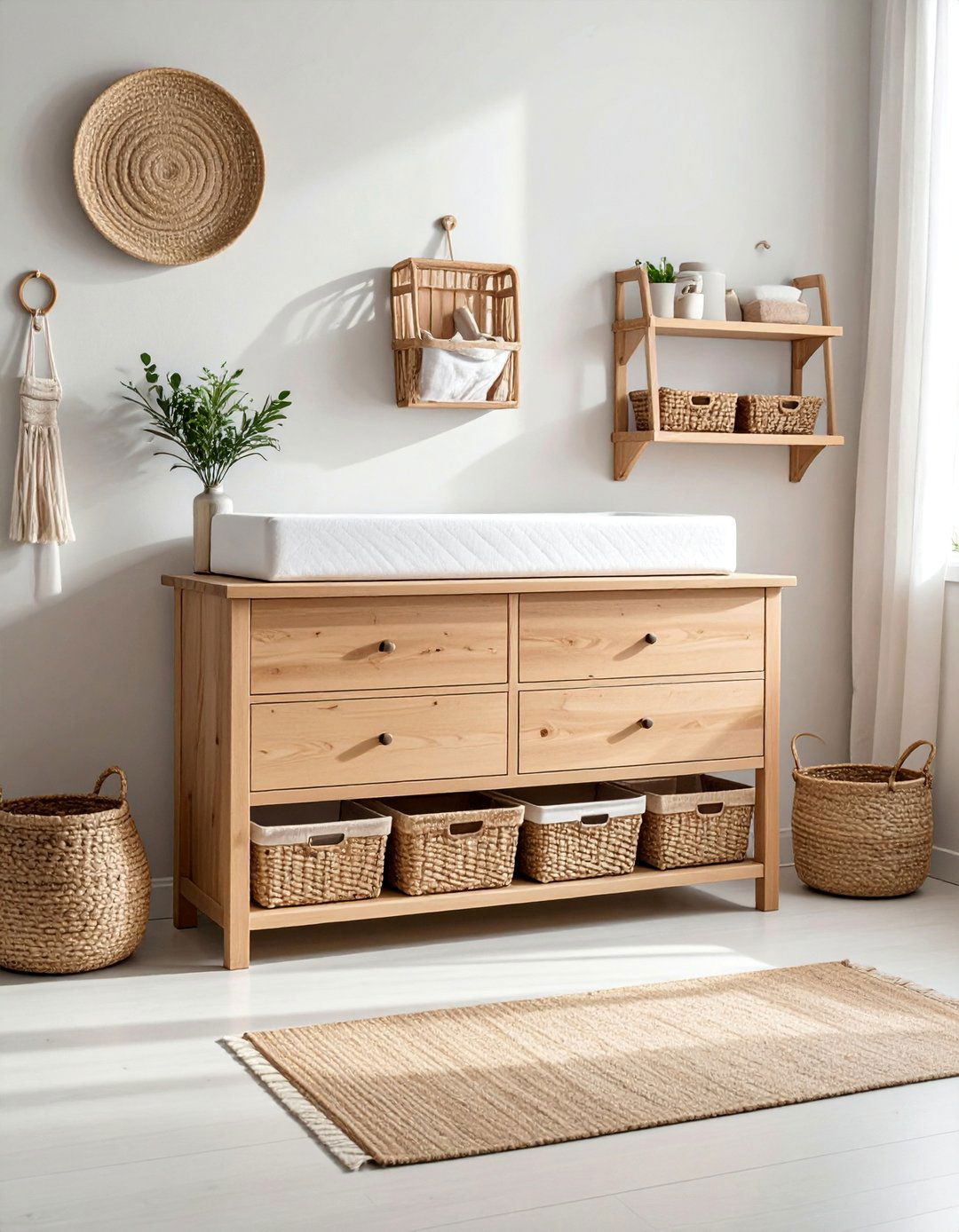
A natural wood changing table combines functionality with rustic style in a farmhouse nursery. Select a piece that showcases the beauty of its material, whether it's a simple pine dresser or a more substantial oak unit. A dresser-style changing table offers ample storage for diapers, wipes, and clothing, helping to keep the space organized and clutter-free. Topping it with a woven changing basket instead of a standard plastic pad enhances the natural, textural feel of the room. This practical piece of furniture becomes a key decorative element, grounding the space with its warm, organic presence and reinforcing the connection to nature.
10. Using Buffalo Check Farmhouse Nursery Patterns
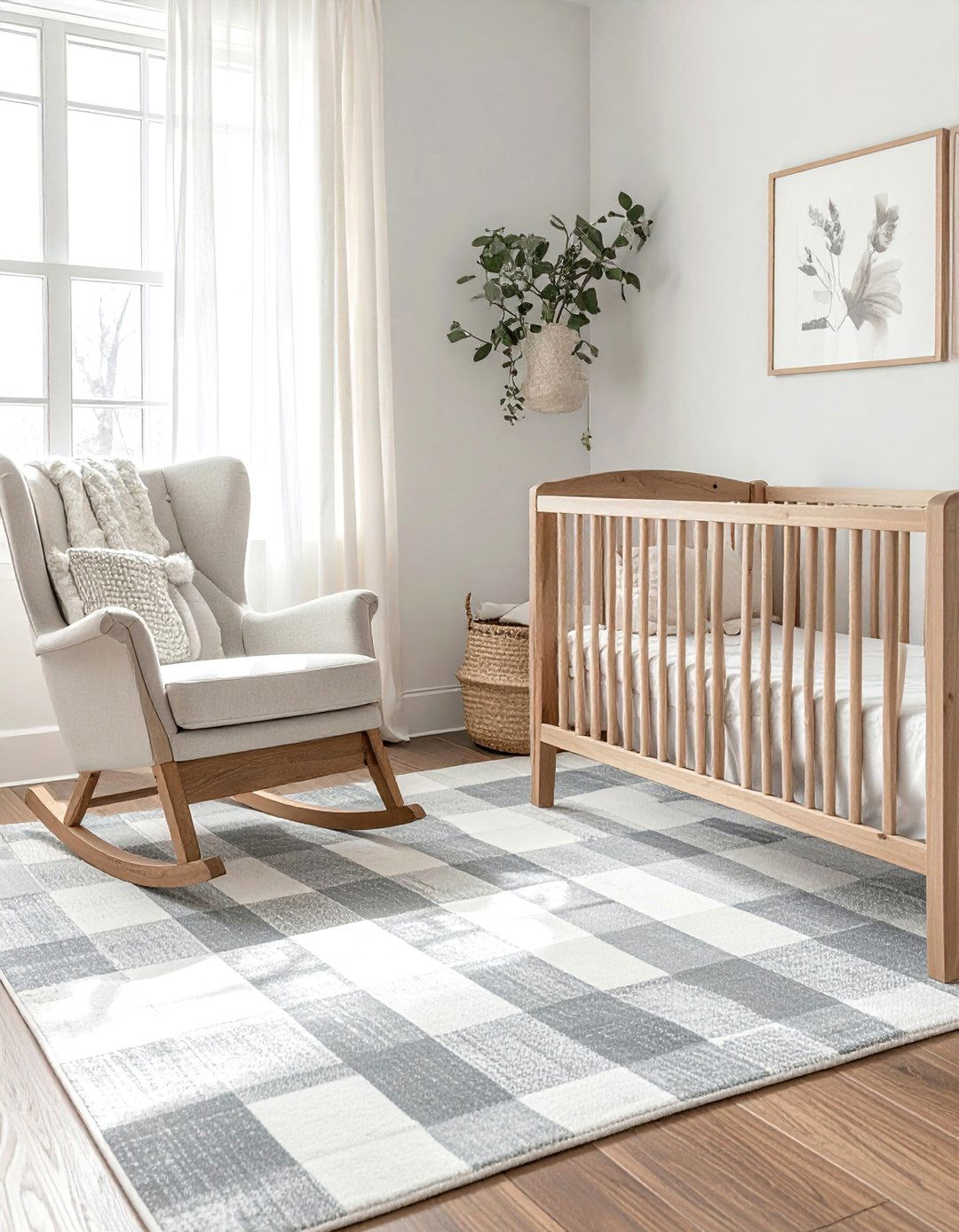
Buffalo check is a classic pattern that fits seamlessly into farmhouse nursery decor, adding a touch of cozy, rustic charm without being overwhelming. Incorporate this timeless black-and-white or gray-and-white plaid through textiles like curtains, a crib skirt, an accent pillow, or a soft area rug. The bold yet simple pattern provides a lovely graphic contrast to the room's neutral tones and natural textures. Using buffalo check sparingly as an accent ensures it adds a comforting, traditional feel rather than dominating the space. It’s a versatile pattern that contributes to a warm and inviting atmosphere perfect for a little one's room.
11. Organizing with Woven Storage Baskets
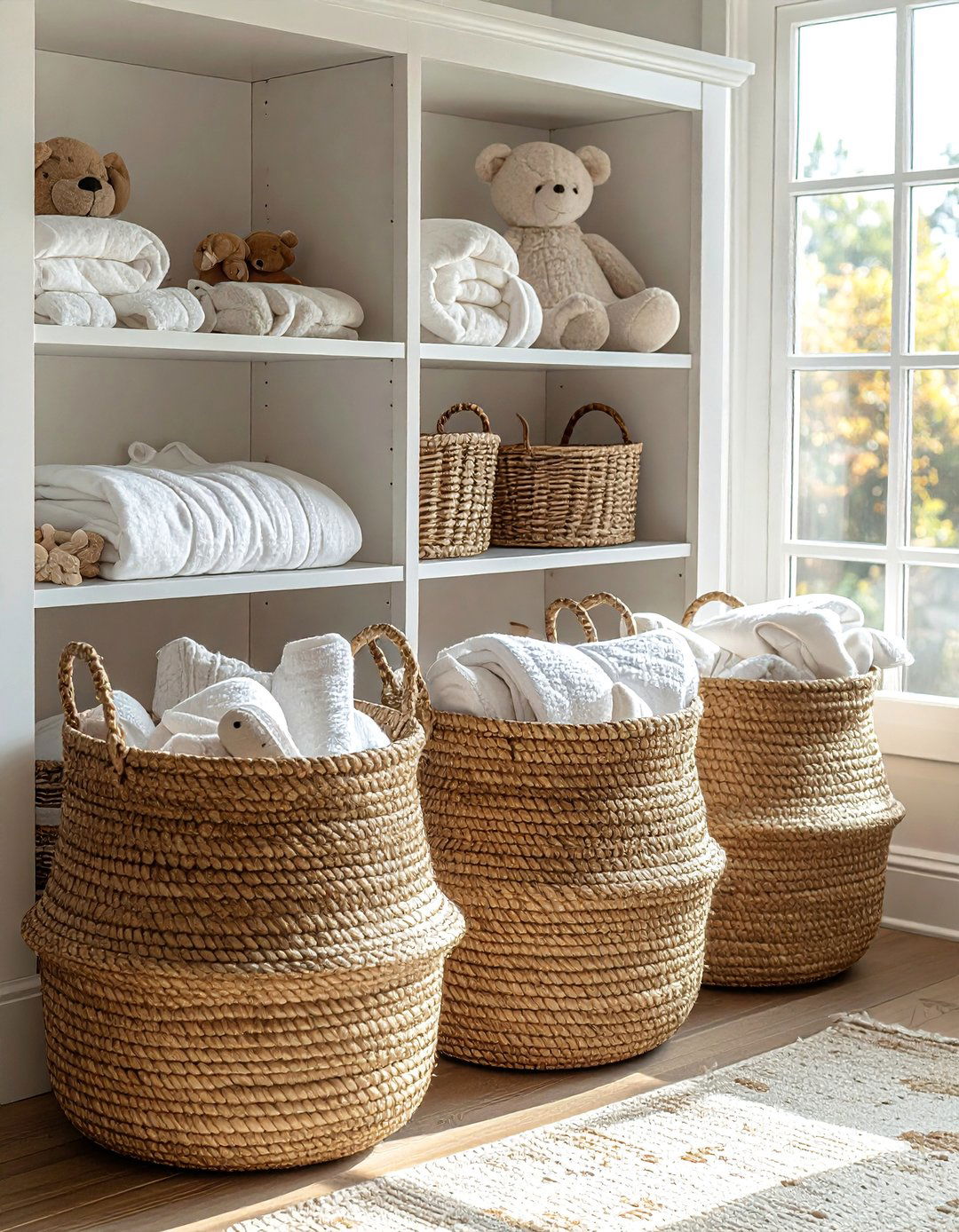
Woven storage baskets are a stylish and practical solution for keeping a farmhouse nursery tidy. Made from natural materials like seagrass, jute, or wicker, these baskets enhance the room's rustic, textural appeal. Use them to store everything from toys and books to blankets and laundry. Their organic feel complements the wooden furniture and soft textiles characteristic of the farmhouse aesthetic. Placing them on open shelves, under the changing table, or in a corner of the room adds warmth and visual interest while serving a crucial organizational purpose. They are an effortless way to blend functionality with natural, understated style.
12. Installing Exposed Wood Beams in the Nursery
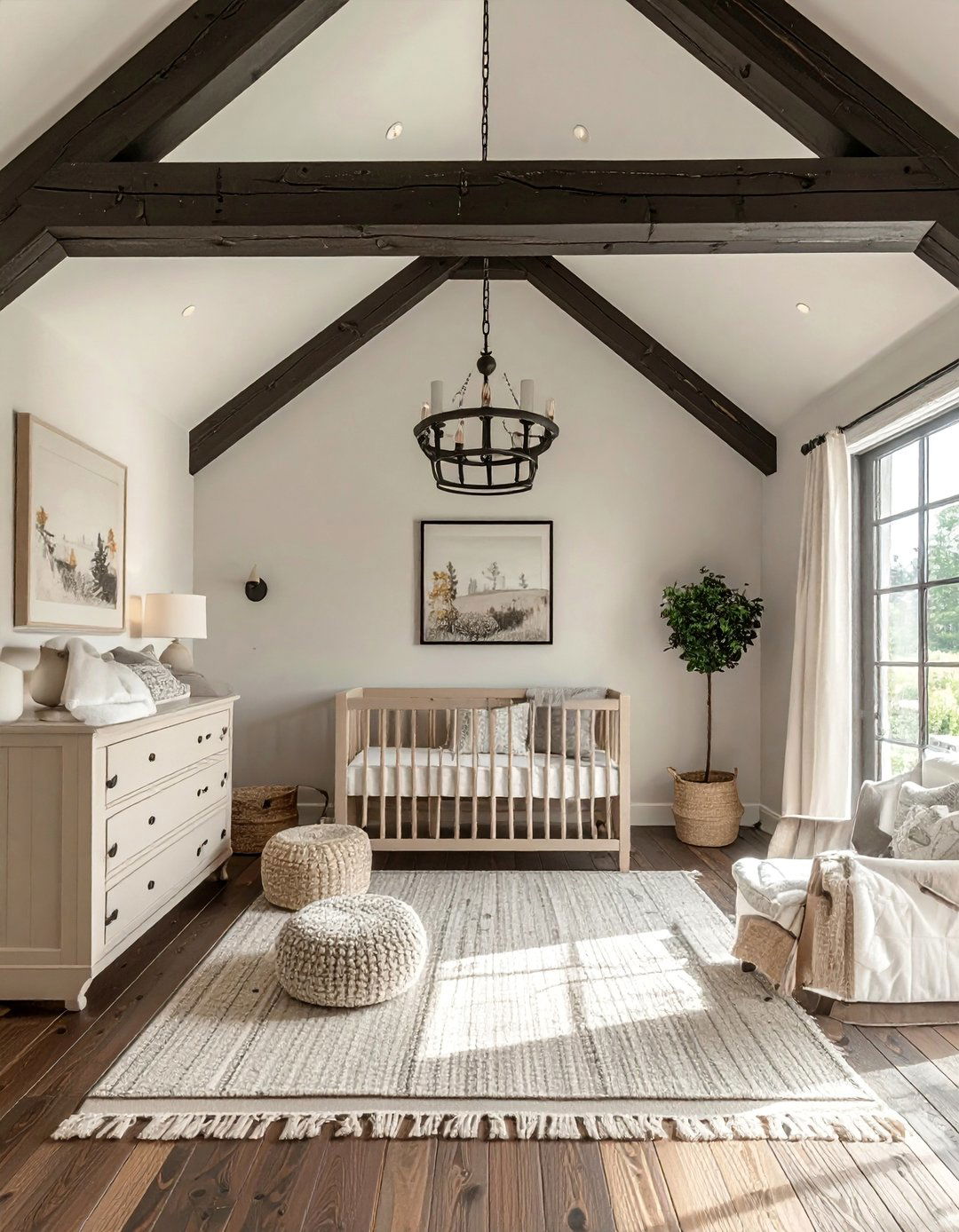
For a truly authentic farmhouse statement, consider adding exposed wood beams to the nursery ceiling. This architectural feature adds immense character, warmth, and a sense of history to the space. Whether they are genuine structural beams or lighter, decorative faux beams, they create a dramatic focal point that draws the eye upward. The natural wood tone provides a beautiful contrast against a light-colored ceiling, reinforcing the rustic, country-inspired theme. This powerful design element instantly transforms a standard room into a cozy, cabin-like sanctuary, perfectly capturing the essence of rustic farmhouse living and creating a memorable space for your baby.
13. Featuring a Personalized Wooden Name Sign
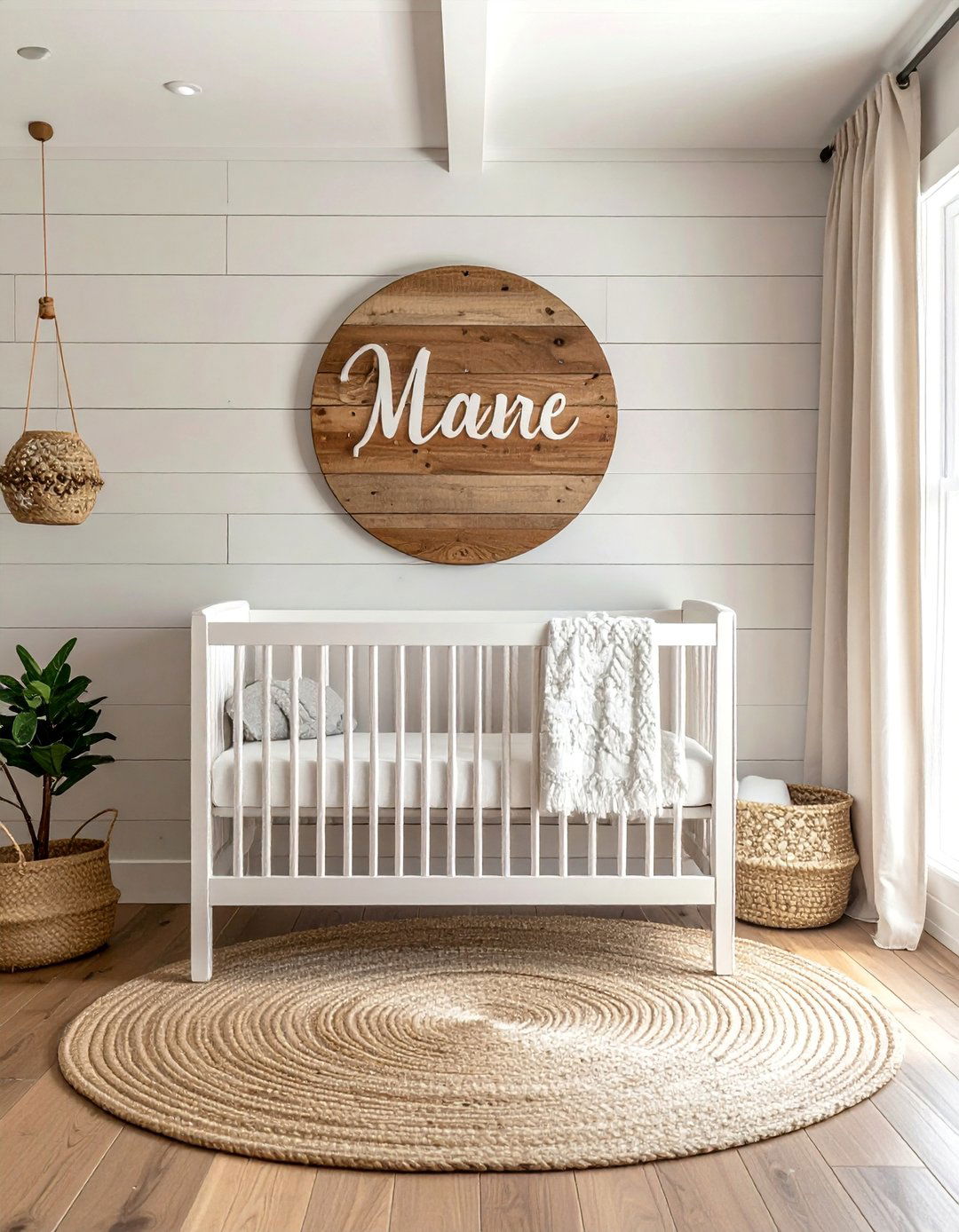
A personalized wooden name sign is a heartwarming and stylish addition to any farmhouse nursery. Typically hung above the crib or changing table, these signs serve as a beautiful focal point and a cherished keepsake. You can choose from a variety of styles, from simple engraved letters on a round wood plaque to elegant script names crafted from laser-cut wood. The natural material aligns perfectly with the rustic decor, adding a custom touch that makes the space uniquely yours. Often adorned with small, painted details like leaves or flowers, these signs blend seamlessly with the room's gentle and handcrafted aesthetic.
14. Including a Cozy Farmhouse Nursery Rocking Chair
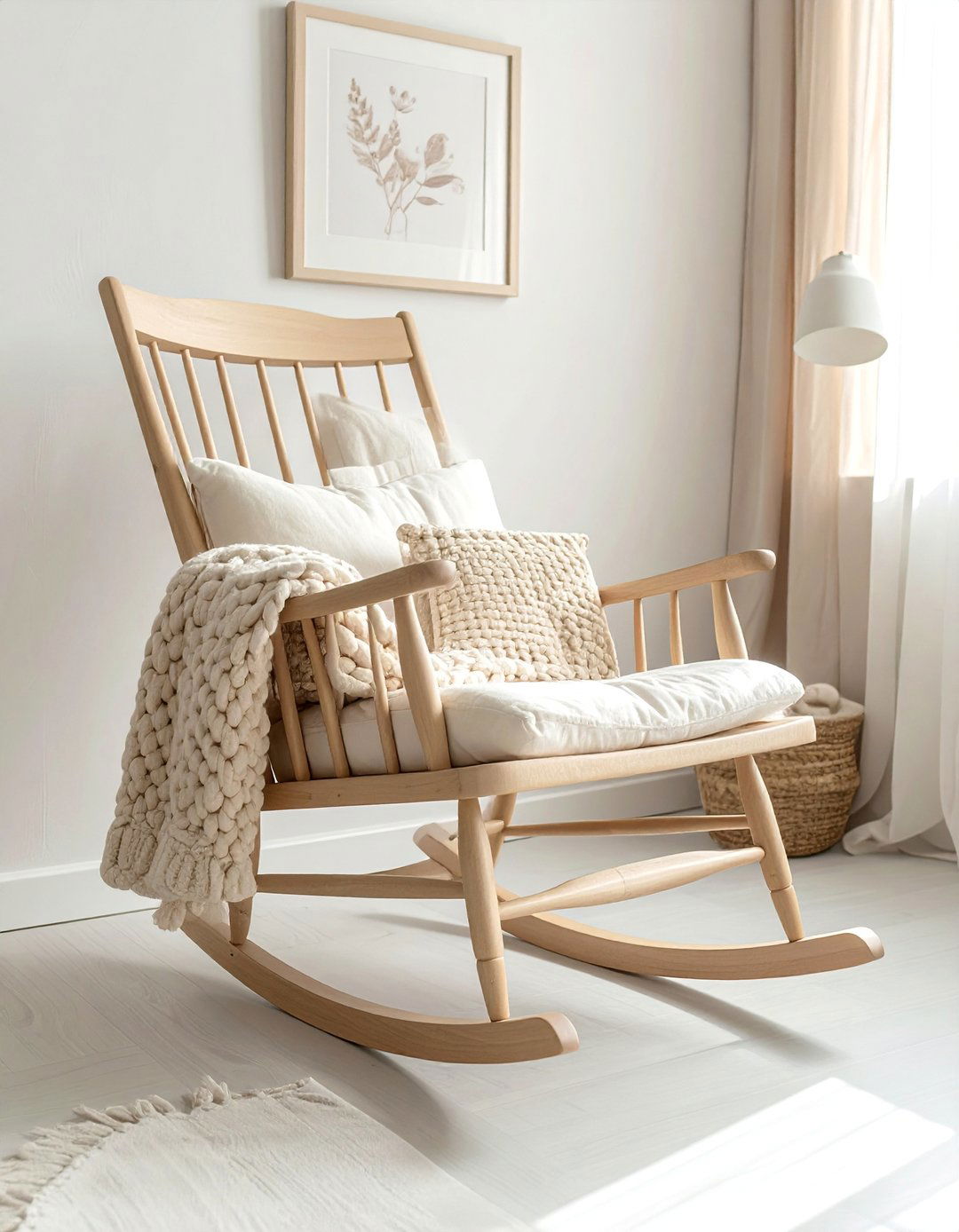
A cozy rocking chair or glider is a must-have for any nursery, and in a farmhouse setting, it should blend comfort with rustic style. Opt for a chair with a simple wooden frame and soft, neutral-colored upholstery in a durable fabric like linen or cotton. A classic spindle-back rocker painted white or left in a natural wood finish is a timeless choice. Drape a chunky knit or buffalo check throw blanket over the back to enhance the cozy feel and add another layer of texture. This essential piece provides a comfortable spot for feeding and cuddling while contributing to the room’s warm and inviting farmhouse charm.
15. Layering Neutral Textiles in the Nursery
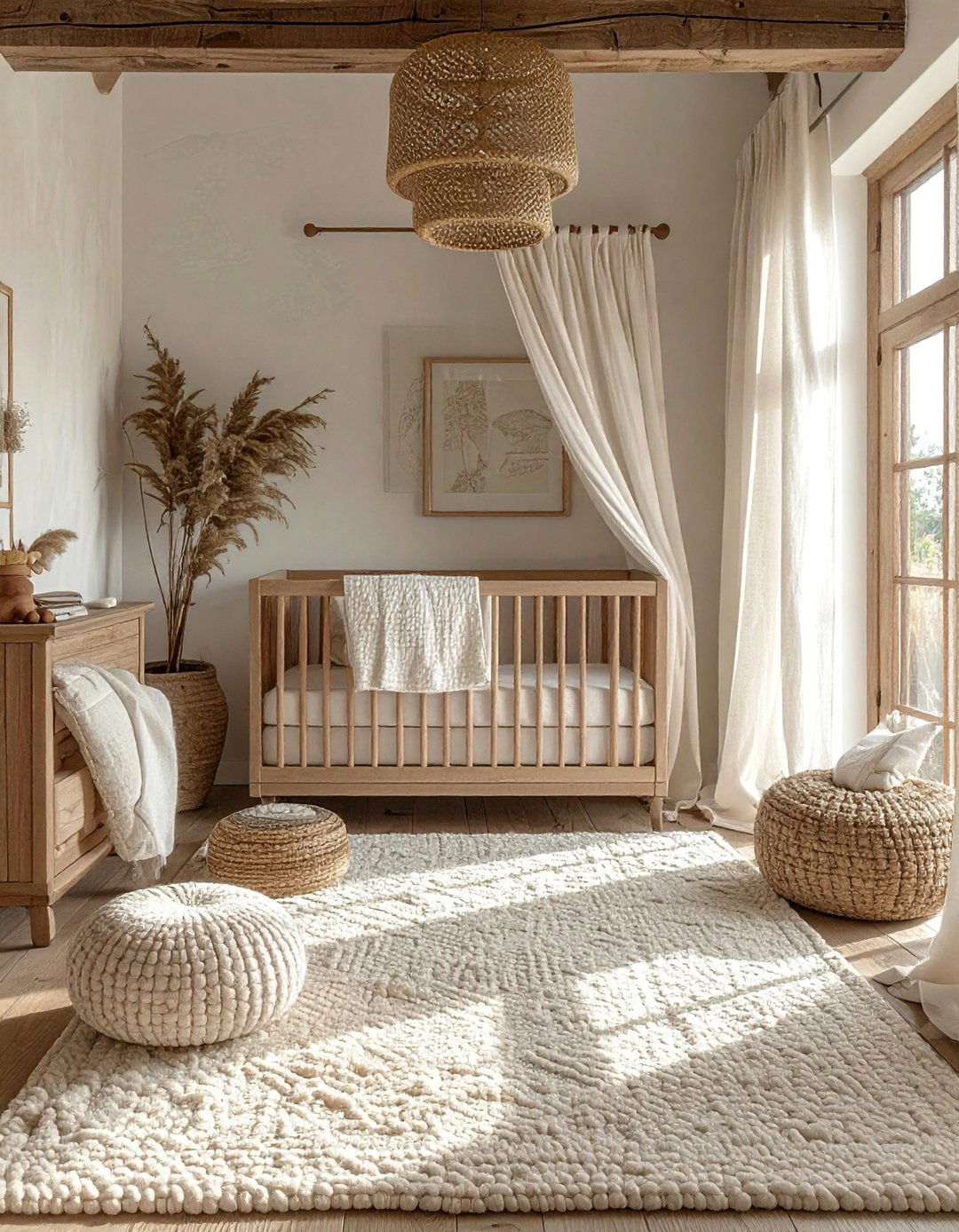
Layering various neutral textiles is crucial for creating a soft and inviting farmhouse nursery. While the color palette is simple, the textures bring depth and coziness. Combine different materials like a plush wool rug on the floor, soft linen or cotton curtains framing the window, and a chunky knit blanket in the crib or draped over a rocking chair. Crib bedding in a simple, organic cotton with a subtle pattern adds another layer of comfort. These textiles work together to soften the hard lines of wooden furniture and create a warm, enveloping atmosphere that is perfect for nurturing a newborn.
Conclusion:
Creating a farmhouse nursery is about blending simplicity, comfort, and rustic charm. By focusing on a neutral color palette, natural materials like wood and woven fibers, and timeless patterns, you can design a serene and inviting space. Key elements such as shiplap walls, distressed furniture, and personalized touches give the room character and warmth. Ultimately, the goal is to craft a peaceful sanctuary that feels both stylish and deeply comforting for you and your baby, a space where beautiful memories can be made. This aesthetic provides a timeless backdrop for the precious early years.

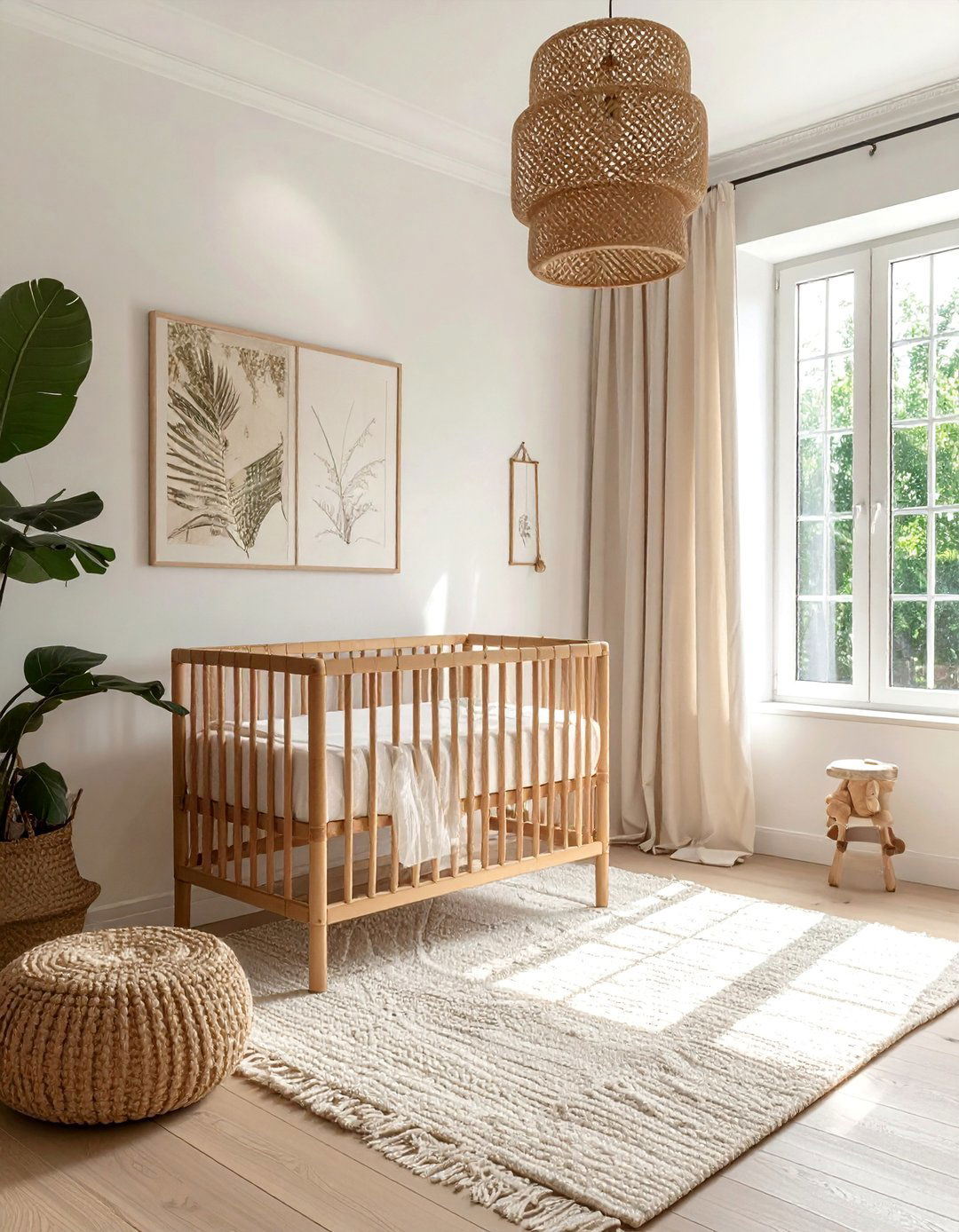
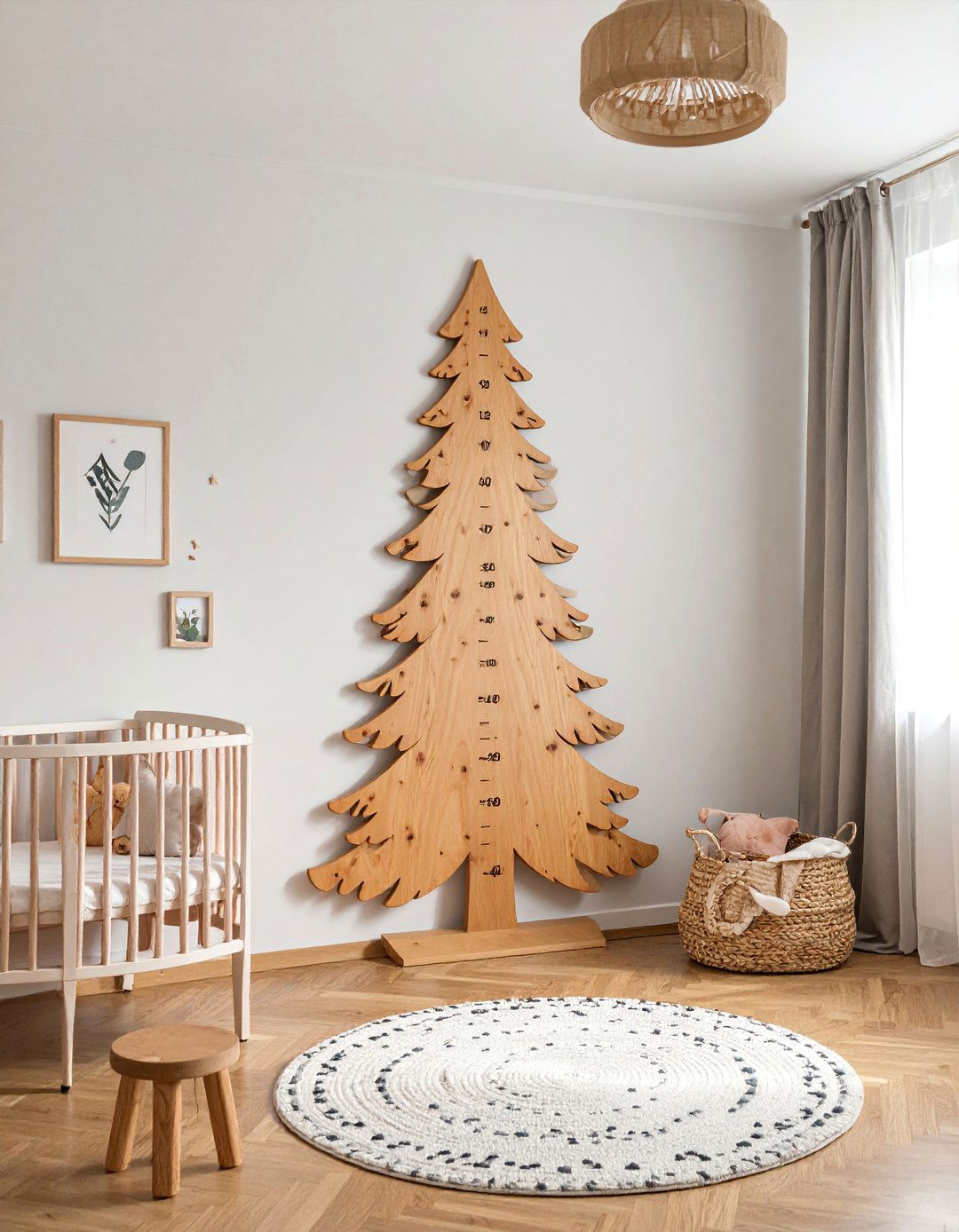
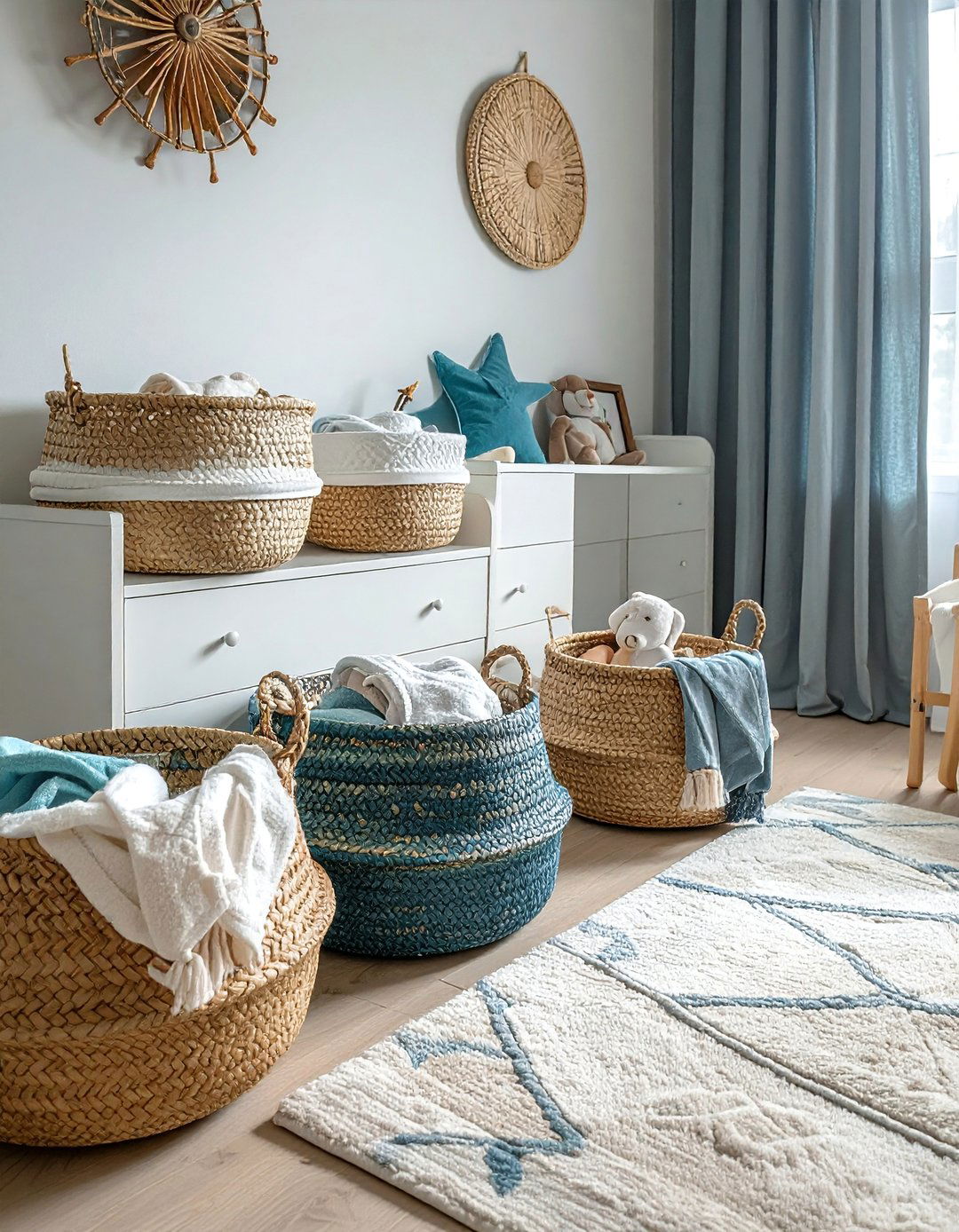
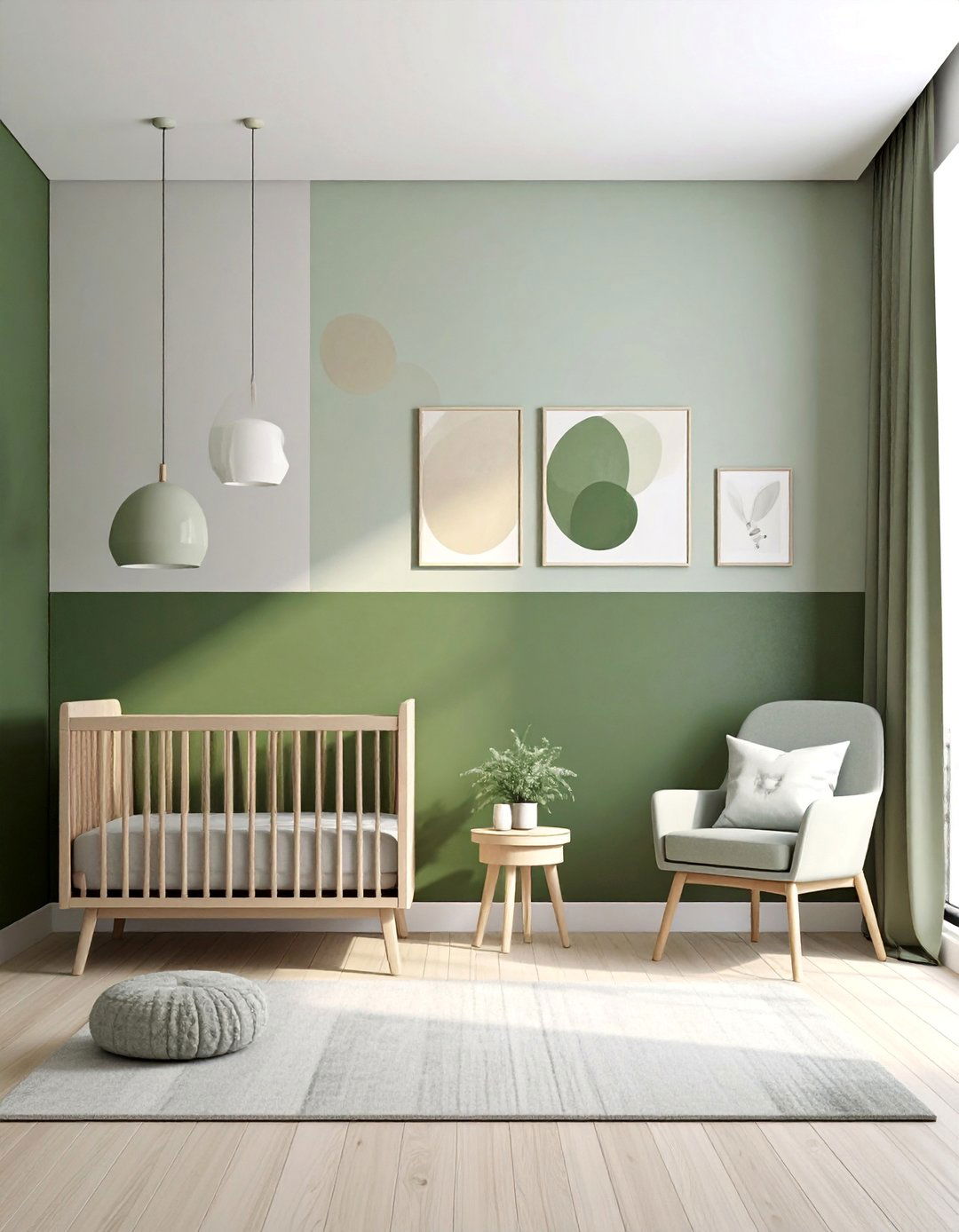
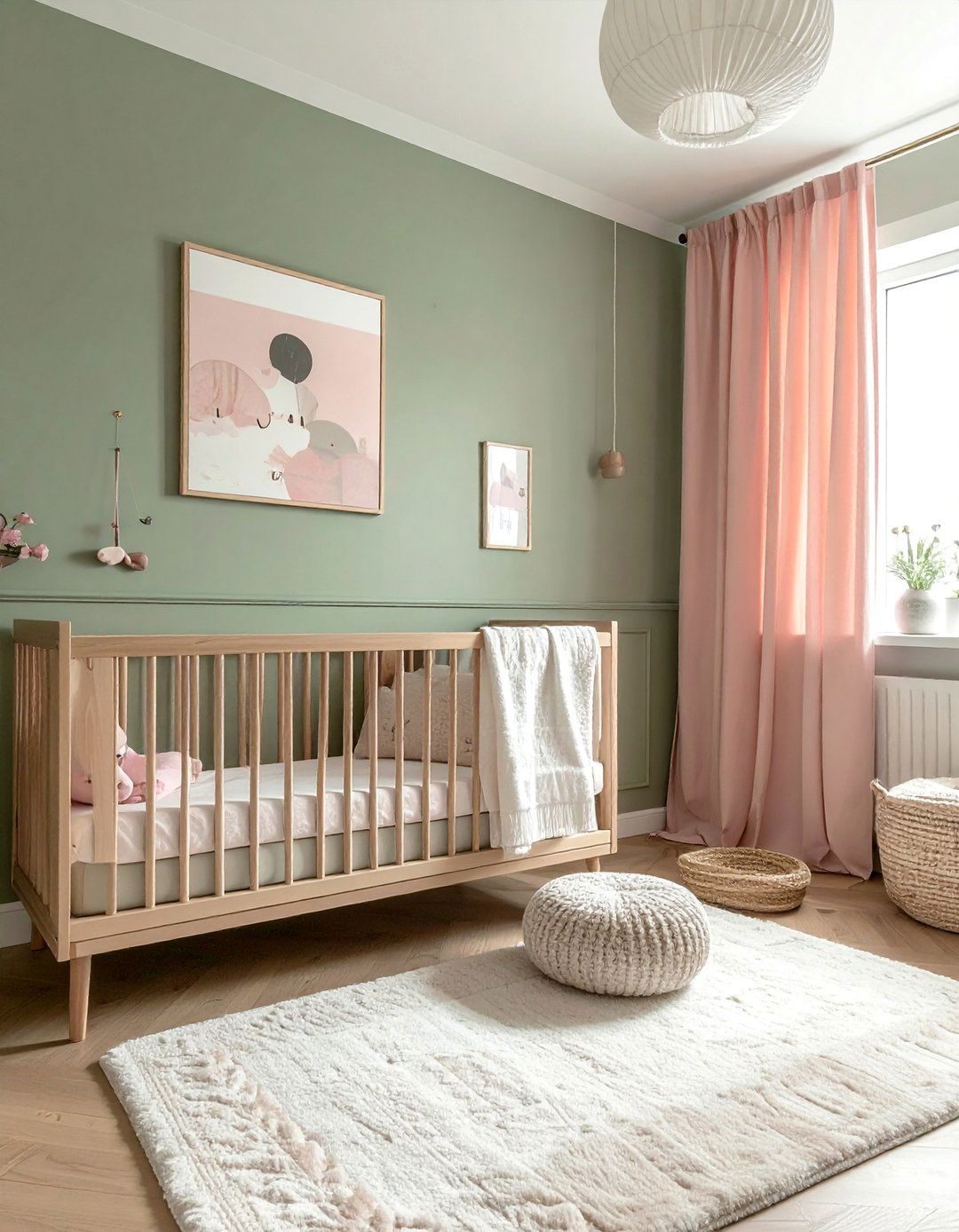
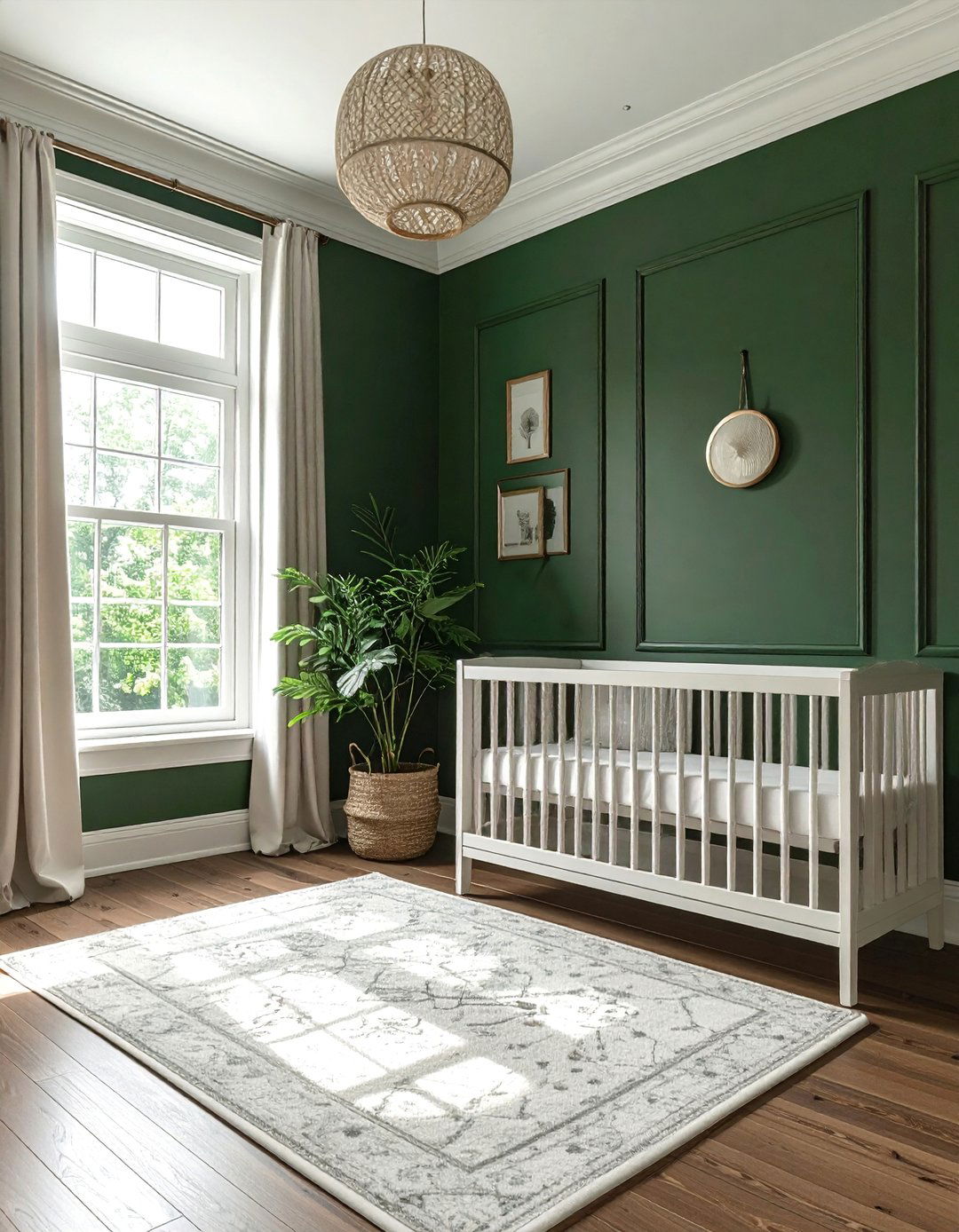
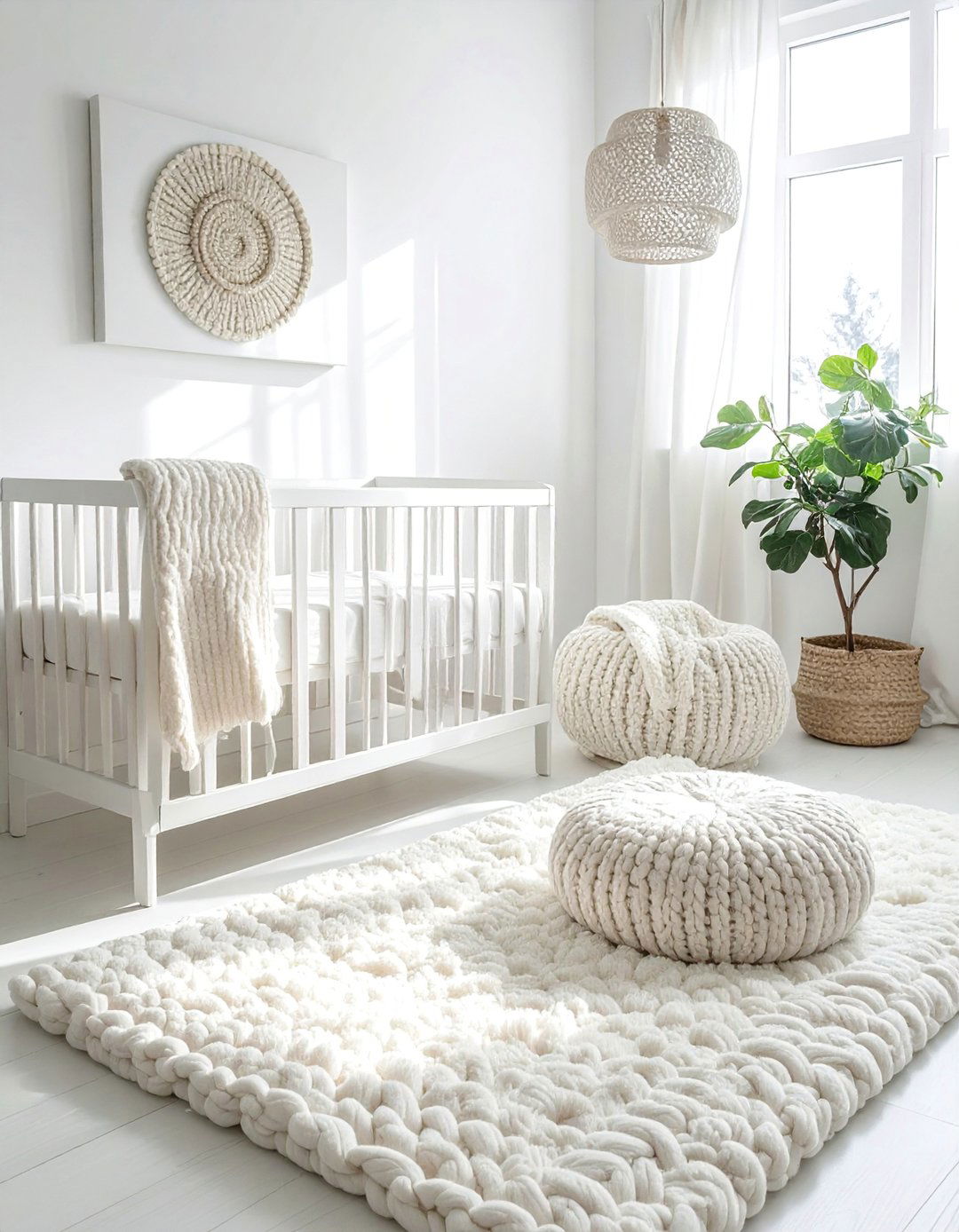
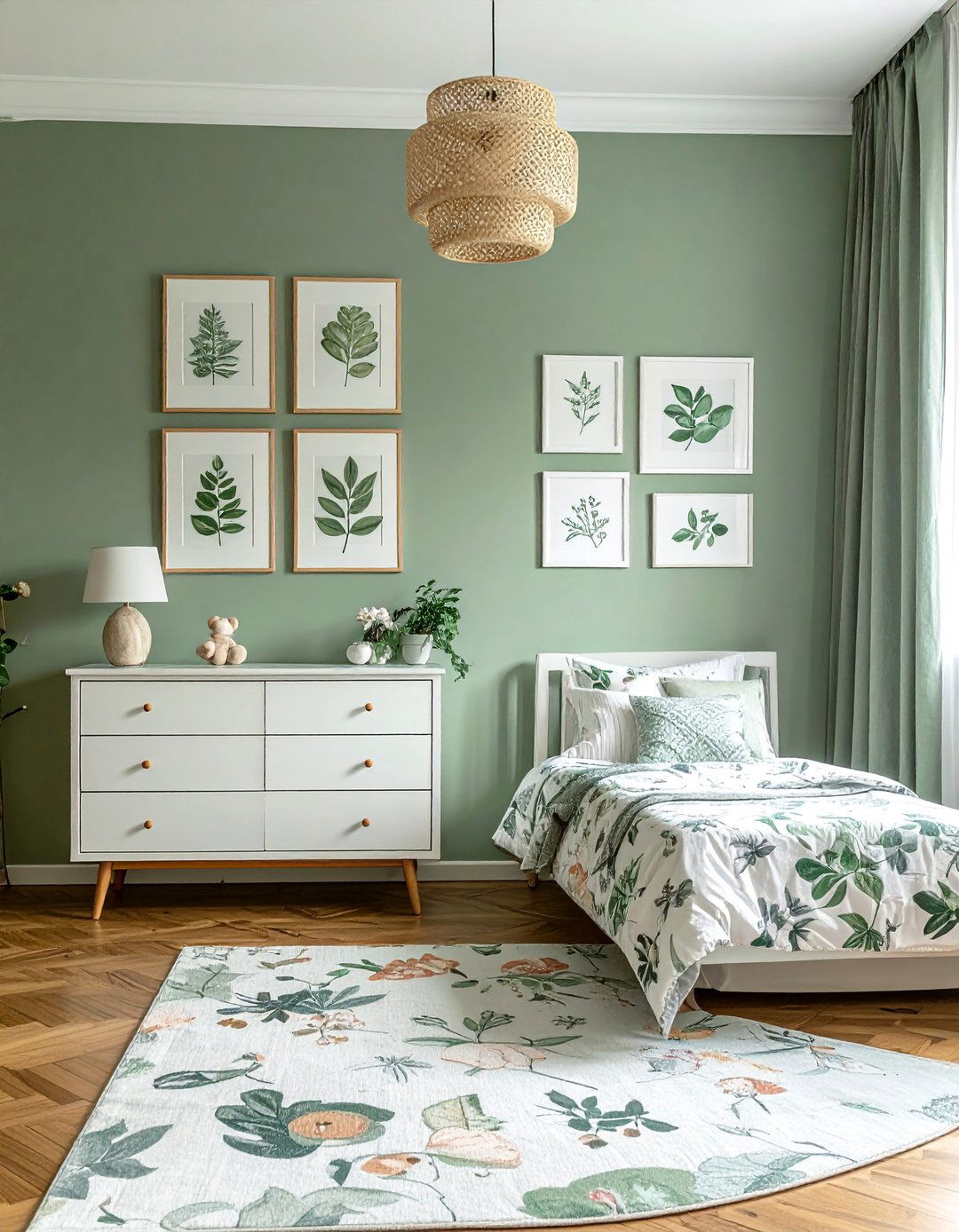
Leave a Reply